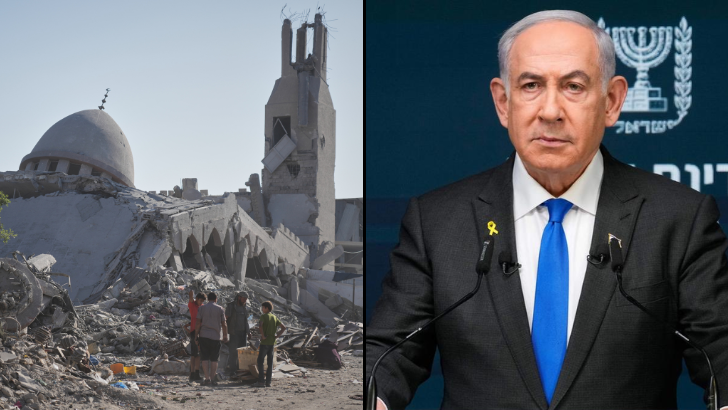Experts warned that Gaza was at risk of famine. Here's why they confirmed it for Gaza City
One third of Gaza's population is expected to experience catastrophic levels of hunger by the end of next month.
PTI
-
Displaced Palestinians gather to receive food (Photo: Wikipedia)
Gaza City, 22 August
The Gaza Strip's largest city is now gripped by
famine, according to the world's leading authority on food crises.
The Integrated Food Security Phase Classification,
or IPC, said Friday that famine was occurring in Gaza City, and is likely to
spread to the southern cities of Khan Younis and Deir al-Balah without a
ceasefire and an end to restrictions on humanitarian aid.
Aid groups and food security experts have warned
for months that Gaza was on the brink of famine, yet this is the first official
confirmation.
COGAT, the Israeli military agency in charge of
transferring aid to the territory, said the report was “false and biased”. It
rejected the claim that there was famine in Gaza and said that in recent weeks
significant steps had been taken to expand the amount of aid entering the strip.
The situation has vastly deteriorated in Gaza
The IPC report said that from early July until
mid-August it has seen the most severe deterioration since it began analysing
food insecurity and malnutrition in Gaza. And despite the “unprecedented pace”
over that time frame, the IPC expects the situation to get worse.
One third of Gaza's population is expected to
experience catastrophic levels of hunger by the end of next month, the IPC
said.
Israeli Prime Minister Benjamin Netanyahu has
denied there is hunger in Gaza, calling reports of starvation “lies” promoted
by Hamas.
Famine occurs when these conditions are met
The IPC was first set up in 2004 during the famine in Somalia. It includes more than a dozen UN agencies, aid groups, governments
and other bodies.
Famine can appear in pockets, sometimes small ones,
and so a formal classification requires caution.
The IPC has only confirmed famine a few times — in Somalia in 2011, and South Sudan in 2017 and 2020,
and last year in parts of Sudan's western Darfur region. This is the first
confirmed famine in the Middle East.
It rates an area as in famine when all three of
these conditions are confirmed:
— 20 per cent of households have an extreme lack of
food, or are essentially starving.
— At least 30 per cent of children 6 months to 5
years old suffer from acute malnutrition, based on a weight-to-height
measurement; or 15 per cent of that age group suffer from acute malnutrition
based on the circumference of their upper arm.
— At least two people, or four children under 5,
per 10,000 are dying daily due to starvation or the interaction of malnutrition
and disease.
Gaza's been a major challenge
Gaza has posed a major challenge for experts because
Israel severely limits access to the territory, making it difficult to gather
data.
In a separate report Friday, the Famine Review
Committee, or FRC, said it, too, had concluded there was famine in part of
Gaza. The FRC is a group of independent international food security experts
regularly consulted by the IPC.
The group acts as an added layer of verification
when the data shows there could be famine.
The data analysed between 1 July and 15 August
showed clear evidence that thresholds for starvation and acute malnutrition
have been reached. Gathering data for mortality has been harder, but the IPC
said it is reasonable to conclude from the evidence that the necessary
threshold has likely been reached.
It's not always clear that hunger is the cause of death
Most cases of severe malnutrition in children arise
through a combination of lack of nutrients along with an infection, leading to
diarrhoea and other symptoms that cause dehydration, said Alex de Waal, author
of “Mass Starvation: The History and Future of Famine” and executive director
of the World Peace Foundation.
“There are no standard guidelines for physicians to
classify cause of death as 'malnutrition' as opposed to 'infection',” he said.
When famine occurs, there are often relatively few
deaths from hunger alone. Far more people die from a combination of
malnutrition, disease and other forms of deprivation.
All of these count as excess deaths — separate from
violence — that can be attributed to a food crisis or famine, he said.
Leave a Reply
Your email address will not be published. Required fields are marked *








.png)


.png)


.png)
.png)

.png)
.png)

